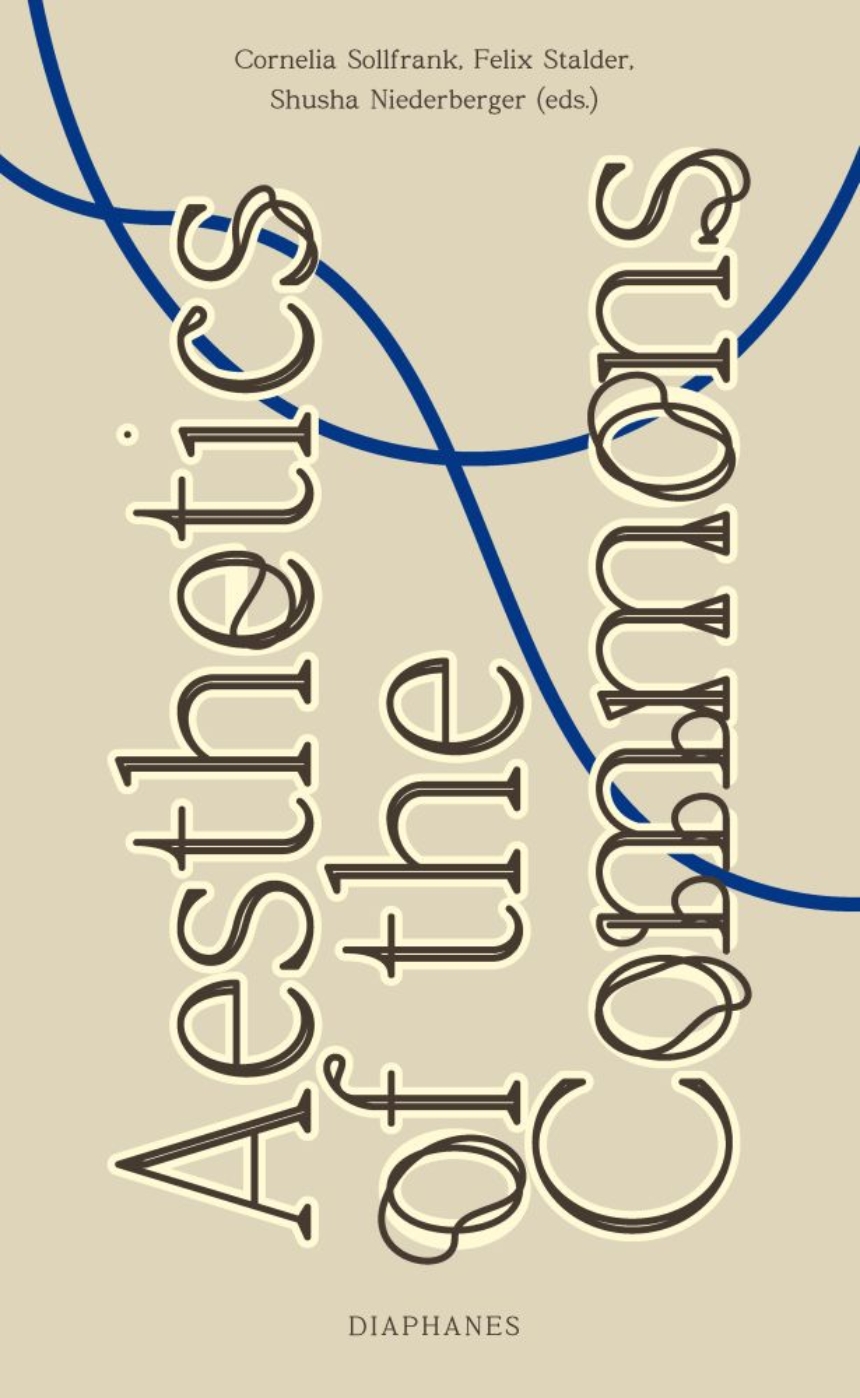Distributed for DIAPHANES
Aesthetics of the Commons
What do a feminist server, an art space located in a public park in North London, a so-called pirate library of high cultural value yet dubious legal status, and an art school that emphasizes collectivity have in common? They all demonstrate that art plays an important role in imagining and producing a real quite different from what is currently hegemonic, and that art has the possibility to not only envision or proclaim ideas in theory, but also to realize them materially.
Aesthetics of the Commons examines a series of artistic and cultural projects—drawn from what can loosely be called the (post)digital—that take up this challenge in different ways. What unites them, however, is that they all have a double character. They are art in the sense that they place themselves in relation to (Western) cultural and art systems, developing discursive and aesthetic positions, but, at the same time, they are operational in that they create recursive environments and freely available resources whose uses exceed these systems. The first aspect raises questions about the kind of aesthetics that are being embodied, the second creates a relation to the larger concept of the commons. In Aesthetics of the Commons, the commons are understood not as a fixed set of principles that need to be adhered to in order to fit a definition, but instead as a thinking tool—in other words, the book’s interest lies in what can be made visible by applying the framework of the commons as a heuristic device.
Aesthetics of the Commons examines a series of artistic and cultural projects—drawn from what can loosely be called the (post)digital—that take up this challenge in different ways. What unites them, however, is that they all have a double character. They are art in the sense that they place themselves in relation to (Western) cultural and art systems, developing discursive and aesthetic positions, but, at the same time, they are operational in that they create recursive environments and freely available resources whose uses exceed these systems. The first aspect raises questions about the kind of aesthetics that are being embodied, the second creates a relation to the larger concept of the commons. In Aesthetics of the Commons, the commons are understood not as a fixed set of principles that need to be adhered to in order to fit a definition, but instead as a thinking tool—in other words, the book’s interest lies in what can be made visible by applying the framework of the commons as a heuristic device.
256 pages | 5 1/4 x 8 1/4 | © 2021
Art:
Table of Contents
Preface
Acknowledgments
Introduction
Agency & Subjectivity
Uploading our libraries: the subjects of art and knowledge commons
Olga Goriunova
The Commons, The Public, and the Aesthetics of Solidarity
Jeremy Gilbert
Which “Aesthetics of the Commons”?
Judith Siegmund
Care & Infrastructure
Commoning the Commons: Revisiting the Role of Art in Times of Crisis
Daphne Dragona
In search of common forms and curatorial epistemologies. On the exhibition OPEN SCORES: How to program the commons
Magdalena Tyzlik-Carver
Postdigital Politics
Gary Hall
Affect & Organization
Situated Aesthetics for Relational Critique. On Messy Entanglements from Maintenance Art to Feminist Server Art
Ines Kleesattel
The Commons, Sociotechnical Imaginaries and Resistance
Sophie Toupin
What is “In Common” Here? Transformed Relationships Between Art and Education on the path to (Digital) Commons
Rahel Puffert
Concatenated Commons and Operational Aesthetics
Christoph Brunner
Description of the main projects
Authors and Editors
[Common Bibliography]
Acknowledgments
Introduction
Agency & Subjectivity
Uploading our libraries: the subjects of art and knowledge commons
Olga Goriunova
The Commons, The Public, and the Aesthetics of Solidarity
Jeremy Gilbert
Which “Aesthetics of the Commons”?
Judith Siegmund
Care & Infrastructure
Commoning the Commons: Revisiting the Role of Art in Times of Crisis
Daphne Dragona
In search of common forms and curatorial epistemologies. On the exhibition OPEN SCORES: How to program the commons
Magdalena Tyzlik-Carver
Postdigital Politics
Gary Hall
Affect & Organization
Situated Aesthetics for Relational Critique. On Messy Entanglements from Maintenance Art to Feminist Server Art
Ines Kleesattel
The Commons, Sociotechnical Imaginaries and Resistance
Sophie Toupin
What is “In Common” Here? Transformed Relationships Between Art and Education on the path to (Digital) Commons
Rahel Puffert
Concatenated Commons and Operational Aesthetics
Christoph Brunner
Description of the main projects
Authors and Editors
[Common Bibliography]

